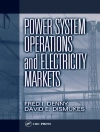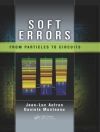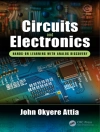MATERIALS FOR HYDROGEN PRODUCTION, CONVERSION, AND STORAGE
Edited by one of the most well-respected and prolific engineers in the world and his team, this book provides a comprehensive overview of hydrogen production, conversion, and storage, offering the scientific literature a comprehensive coverage of this important fuel.
Continually growing environmental concerns are driving every, or almost every, country on the planet towards cleaner and greener energy production. This ultimately leaves no option other than using hydrogen as a fuel that has almost no adverse environmental impact. But hydrogen poses several hazards in terms of human safety as its mixture of air is prone to potential detonations and fires. In addition, the permeability of cryogenic storage can induce frostbite as it leaks through metal pipes. In short, there are many challenges at every step to strive for emission-free fuel. In addition to these challenges, there are many emerging technologies in this area. For example, as the density of hydrogen is very low, efficient methods are being developed and engineered to store it in small volumes.
This groundbreaking new volume describes the production of hydrogen from various sources along with the protagonist materials involved. Further, the extensive and novel materials involved in conversion technologies are discussed. Also covered here are the details of the storage materials of hydrogen for both physical and chemical systems. Both renewal and non-renewal sources are examined as feedstocks for the production of hydrogen. The non-renewal feedstocks, mainly petroleum, are the major contributor to date but there is a future perspective in a renewal source comprising mainly of water splitting via electrolysis, radiolysis, thermolysis, photocatalytic water splitting, and biohydrogen routes. Whether for the student, veteran engineer, new hire, or other industry professionals, this is a must-have for any library.
Об авторе
Inamuddin, Ph D, is an assistant professor in the Department of Applied Chemistry, Aligarh Muslim University, Aligarh, India. He has extensive research experience in analytical chemistry, materials chemistry, electrochemistry, renewable energy, and environmental science. He has worked on different research projects funded by various government agencies and universities and is the recipient of multiple awards, including the Fast Track Young Scientist Award and the Young Researcher of the Year Award for 2020, from Aligarh Muslim University. He has published almost 200 research articles in various international scientific journals, 19 book chapters, and 145 edited books with multiple well-known publishers, including Scrivener Publishing. He is a member of various editorial boards for scientific and technical journals and is an editor on several of them in different capacities.
Tariq Altalhi, Ph D, is an assistant professor and department head in the Department of Chemistry at Taif University, Saudi Arabia. He is also the Vice Dean of the College of Science, and he leads a group involved in fundamental interdisciplinary research across numerous fields.
Sayed Mohammed Adnan, Ph D, is a research scholar in the Department of Chemical Engineering, Aligarh Muslim University, India. He is actively involved in research and has published several articles in reputed journals. His research areas are very broad, encompassing a multitude of scientific areas.
Mohammed A. Amin, Ph D, is a professor of physical chemistry at Taif University, Saudi Arabia, and a professor of physical chemistry at Ain Shams University, Cairo, Egypt. He has won numerous scholarly awards and has been a guest editor for a reputable scientific journal.












